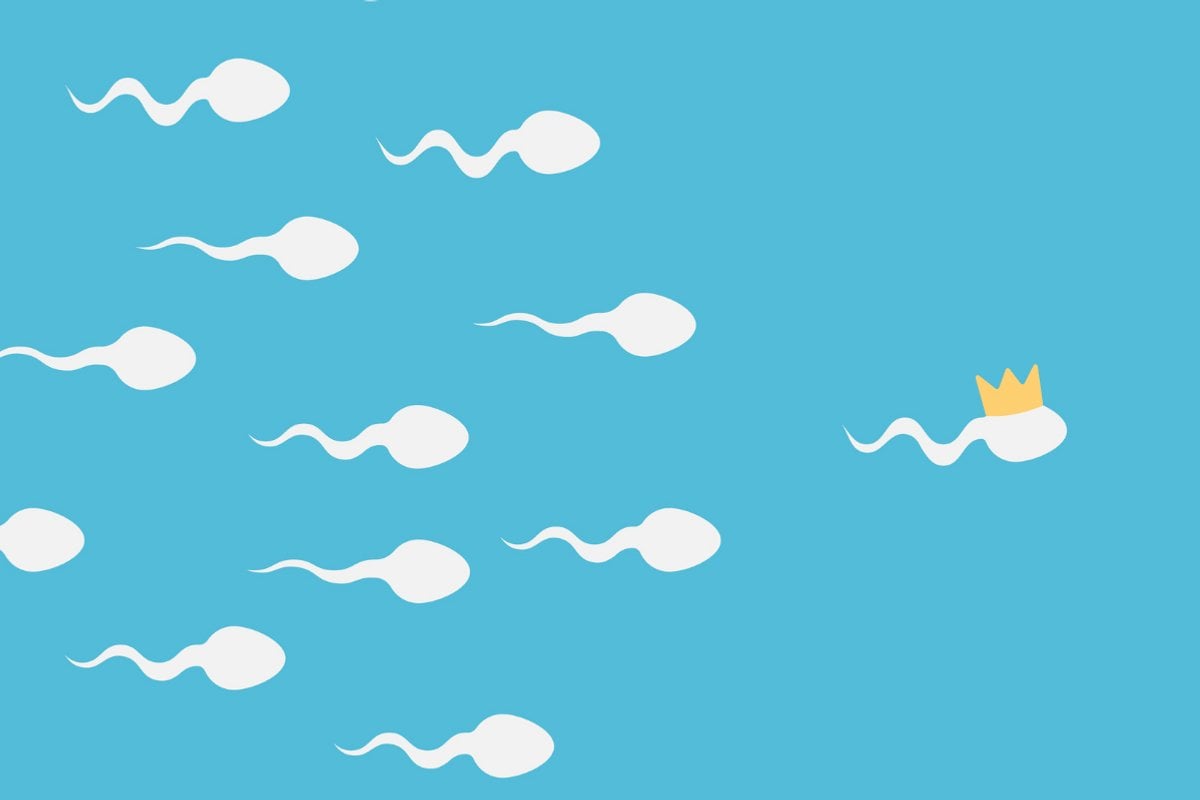
Ah, the thrilling race of conception! That exhilarating competition between male gametes. At the shot of the starting pistol, hundreds of millions of sperm spring from the starting block, jostling through the uterus and screaming down the fallopian tube in a high-speed race to the egg waiting at the finish line. Only the strongest, fastest sperm will beat the rest and claim the ultimate prize.
… Or not.
Turns out, there's a flaw in the old, male-centric narrative of fertilisation, which positions the egg as a sitting duck waiting to be poached by the most skilful hunter. New research shows that, much like their human masters, eggs are actually selective about which sperm they let in.
Watch: Chantelle Otten's sex tips for couples. Post continues below.
That's right – the egg 'chooses' the sperm. Here's how this was discovered, and what it really means.
Cryptic female choice.
Cryptic female choice is a decades old theory about female mate-selection. Since the '70s, scientists have been jotting down a long list of ways in which female animals can influence which sperm fertilise their eggs after copulating with more than one male.
